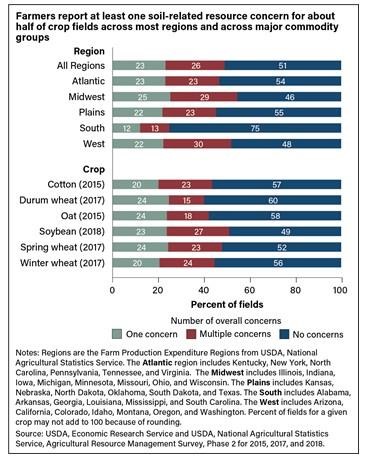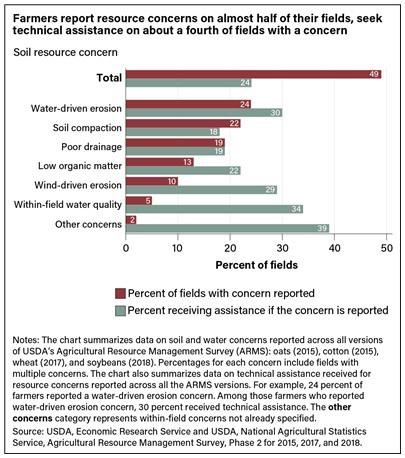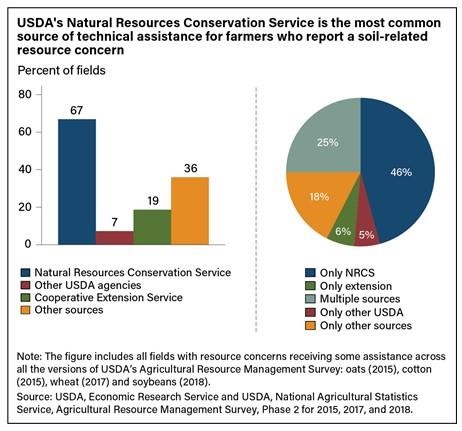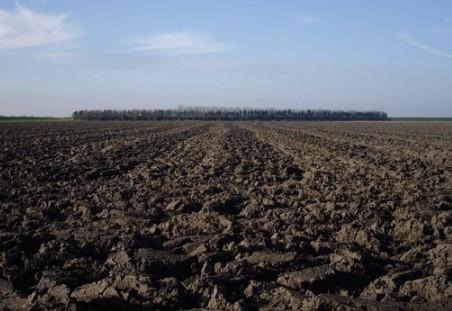By Jane Callier
Heal the earth by healing the soil? Are we really able to slow global warming by manipulating dirt? Humans have been stripping mother earth of her verdant, life-supporting cloak for a long time, but the damage has shot up to a critical stage in recent years.
Earth has been stripped so bare that ecological systems are out of balance, resulting in, among other things, global warming. Extreme weather is causing drought, wildfire and increased difference between land and sea temperatures. Wet areas are becoming wetter and dry areas are drier. We need to help mother earth regain her cloak. Soil is the fabric.
One teaspoon of healthy soil contains millions of microscopic organisms. This life is in the first two inches of soil, the topsoil. Over time, large amounts of carbon have been released into the air by tilling the soil, a seemingly harmless practice.
Scientists now know that soil structure is a complex system of relationships among microorganisms. Tilling destroys this network, rendering soil largely lifeless.
Ironically, the natural process of plant photosynthesis, the focus of tilling the soil in the first place, draws carbon out of the atmosphere. A time-lapse video of earth's atmosphere shows large amounts of carbon are released early in spring when tilling occurs and before plants start to grow. The situation improves as plants grow, drawing a significant amount of carbon out of the atmosphere. As plants decline in fall and winter months, atmospheric carbon again increases.
One way to alleviate the huge carbon release would be to not till the soil. Growing plants in more places year-round would also increase the microbial life in the soil.
Turning soil disrupts the food web, the elaborate structure of interconnected soil organisms. Once broken, this food web has to rebuild and that takes time.
Organic material provides food for soil organisms. Imagine earthworms as giants, with the remaining soil organisms diminishing in size from tiny insects and nematodes to microscopic bacteria and fungi. Decaying plants and animals feed these soil organisms, releasing nutrients as they break down and form humus.
Even one application of compost helps decrease the carbon level in earth's atmosphere and creates nutrient-rich humus. Humus is important to healthy soil. It improves the water-holding capacity that enables the population of soil organisms to grow. These soil organisms create a network that acts as glue, improving soil structure.
Compost greatly benefits plant growth and helps soil retain water so you need to irrigate less often. Compost also helps fight off plant disease and insects. By composting, you keep trash out of the landfill, helping to reduce methane gas.
Eliminating tilling and rotating crops improves yield, especially in dry climates like ours. Other benefits include soil, water and nutrient retention along with fewer weeds. When you till the soil, weed seeds are exposed to air and light and may germinate. With every shovelful, you bring more weed seeds to the surface.
Instead of turning the soil, cut plants off at the ground. Chop up leaves and stems, leaving them in place to compost. Add a layer of weed-free compost on top to make the soil friable and feed soil organisms.
Nature has been performing a continuous cycle of growing and returning material to the soil for thousands of years. Organic material like compost increases life in earth's over-tilled and compacted soil. Other ways you can add organic material to the soil are by using a mulching mower, letting fallen leaves decompose in place, and implementing the chop-and-drop system as you groom your garden.
Nature doesn't aspire to an immaculately groomed look. We should return organic material to the earth. We need to train ourselves to enjoy gardens with a more natural appearance.
Managing your soil using these methods is key to maintaining healthy aggregated soil. Regenerating the soil is a natural, inexpensive way to reduce greenhouse gasses. The solution is right under our feet.
Put the practice of no-till gardening to work in your own garden. Avoid disturbing the soil. Keep soil covered with mulch. Keep plants growing through the year to feed the soil. And diversify plant material through crop rotation. For a more in-depth look at these ideas, watch “Soil is the Solution: Healing the Earth One Yard at a Time,” a recorded workshop of UC Master Gardeners of Napa County presentation.
Composting Workshop: Napa County Master Gardeners will host a workshop on “Home Composting: Worm & Rapid/Hot” on Saturday, May 21, from 10 am to 11:30 am, at Napa Valley College Upper Valley Campus, 1088 College Avenue, St. Helena. Learn about rapid (hot) composting and worm composting, why to do it and how to build a pile or bin. If you complete the workshop, you can purchase a backyard compost bin for $20 or to get a worm bin kit. Register here.
Planting Workshop: UC Master Gardeners of Napa County and Ole Health present a workshop on planting peppers, eggplant and basil on Saturday, May 21, from 10 am to noon, at Ole Health, 300 Hartle Court, Napa. Class size is limited; please register through Ole Health: https://www.olehealth.org/our-services/community-outreach- resources
Pollinator Workshop: UC Master Gardeners of Napa County will present a workshop on “Planting for Pollinators” on Sunday, May 22, from 1 pm to 3 pm, at Yountville Event Center, 6516 Washington Street, Yountville. Learn how to create and maintain a year-round habitat for pollinators of all sizes in your garden. Online registration or telephone the Parks & Recreation Department at 707-944-8712.
Got Garden Questions? Contact our Help Desk. The team is working remotely so please submit your questions through our diagnosis form, sending any photos to mastergardeners@countyofnapa.org or leave a detailed message at 707- 253-4143. A Master Gardener will get back to you by phone or email. For more information visit https://napamg.ucanr.edu or find us on Facebook or Instagram, UC Master Gardeners of Napa County.

Worms in dirt (Flickr, NRCS Oregon)

Conservation Agriculture (Flickr, africarising)

Cover crops and no-till farming (Flickr, Chesapeake Bay Program

Soil Humus (Depositphotos)

over tilled soil (Geograph.org.uk Tim Hallam)
Source : ucanr.edu